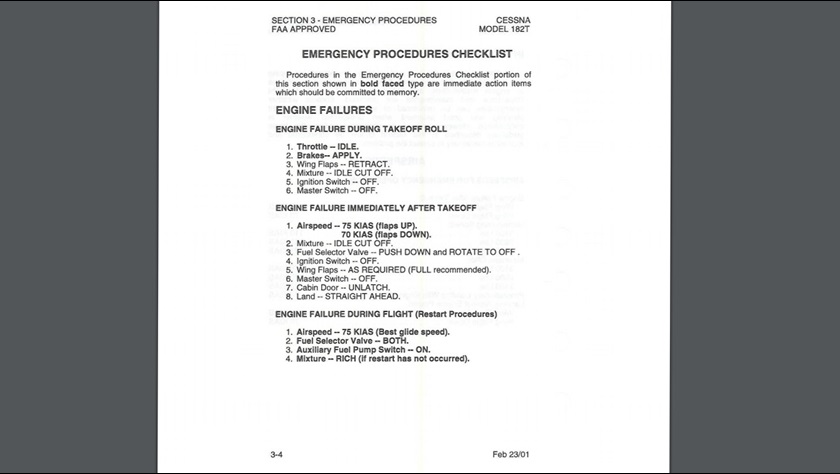Training Tip: Immediate-action items
You are leveling off for the morning’s first circuit of the traffic pattern when a hand (not yours) seizes hold of the throttle and eases it back to the idle position.
You can:
A) Push the hand away and resume powered flight.
B) Ask the owner of the hand to kindly use it to hand you the appropriate checklist.
C) Lower the nose, rough trim for recommended glide speed, and set up for the power-off landing drill your instructor has dished up.
Answer B may or may not evoke the desired response.
That leaves Answer C as the only alternative that directly addresses the situation in a manner you would want to employ on the practical test for which you are training.
Making it work, however, will require using “immediate action” items—the steps you have committed to memory for safely maneuvering the aircraft into position to land after a low-altitude power loss, especially the target airspeed recommended for your aircraft. The reason you would “rough trim” for that airspeed is that seconds count when you may have only a minute or two of glide time to complete your landing.
At this point, many student pilots ask, “What about the checklist?”
True, your use of checklists reflects the quality of your training and comes under serious scrutiny on a practical test. But you won’t impress a designated examiner if you get dangerously low or sacrifice aircraft control while checking the list. A similar common-sense approach would apply, for example, when dealing with an in-flight fire, or a spin recovery.
As the Airplane Flying Handbook’s discussion of emergency landings puts it: “Positive airplane control during the final part of the approach has priority over all other considerations, including airplane configuration and checklist tasks.”
The issue is discussed extensively in Appendix 6 of the Private Pilot—Airplane Airman Certification Standards, which notes, “In some situations, reading the actual checklist may be impractical or unsafe. In such cases, the evaluator should assess the applicant’s performance of published or recommended immediate action ‘memory’ items along with his or her review of the appropriate checklist once conditions permit.”
When “conditions permit” is when you would fine-tune your aircraft’s trim—assuming you are not already safely on the ground with this important test item well done and in the bag.



